In this article, acclaimed self-portrait photographer and Sony Artisan Brooke Shaden introduces beginners to the art of self-portraiture, highlighting its creative and personal benefits. Keep reading as she shares how to get started in five easy steps.
Brooke Shaden’s 5 Simple Tips To Get Started In Self-Portrait Photography
Anyone can be a self-portrait artist, and there are many reasons to give it a try:
–Test out new ideas without worrying about letting someone down.
–Create quickly and on your own timeline without waiting for others to collaborate with.
–Embrace a more positive mindset about your body.
All easier said than done, but self-portraiture doesn’t have to be difficult, particularly with new technology. Just because you’re using yourself as the subject doesn’t mean you have to show your entire body if you aren’t ready for that yet. A self-portrait may only include your hand or part of your face. If you’re feeling uneasy about showing yourself on camera, here are two ways to help you overcome this:
–Become a character. If you can see yourself as someone else who is simply playing a part, it can separate you from yourself and make the process a little easier to detach from.
–Your boldness begets boldness. If you take the step you embrace your body on camera, you’re inspiring others to do the same. It’s a process that only requires one tiny step at a time.
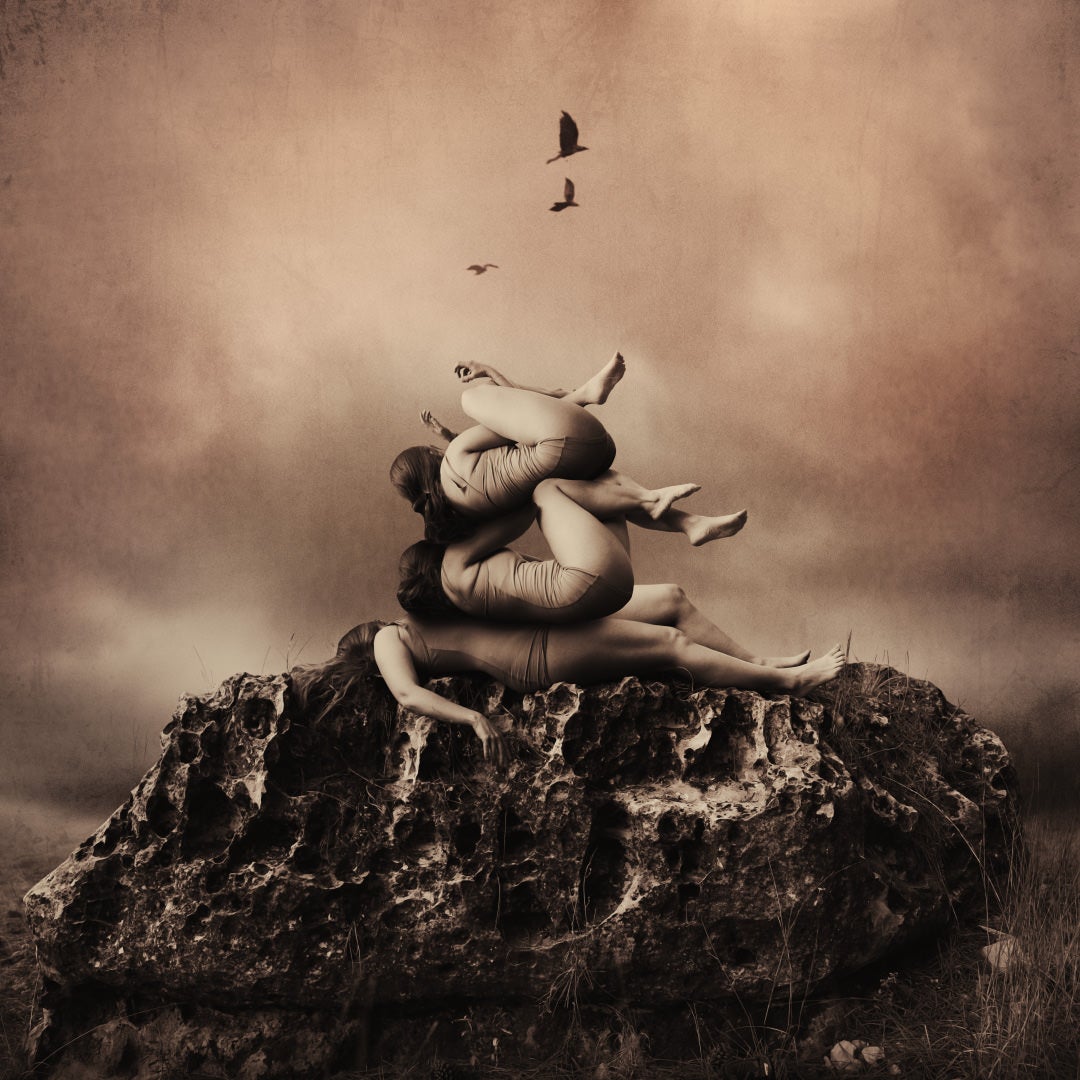
“Omne Trium Perfectum” self-portrait by Brooke Shaden, 2025
Here are five simple ways to get started with self-portrait photography:
1. Learn your tech.
I use the Sony Alpha 7R V because it allows for three things that are important to my process:
–It has a flip screen which can be really important for seeing where you are in the frame and checking your pose. If you don’t have a flip screen, you can try tethering to a laptop to see what you’re doing in the frame, or to your phone. I prefer the flip screen, though, because I shoot by myself and often out on location, so I try to take as few items with me as possible.
–It has a high dynamic range, which is important for me because I often utilize dark spaces for my self-portraits and need to trust that I can recover underexposed images with clean quality.
–Auto focusing is excellent in the Sony Alpha 7R V, so when I click the self-portrait, I can trust it’s going to search for my eyes and nail the focus every time.
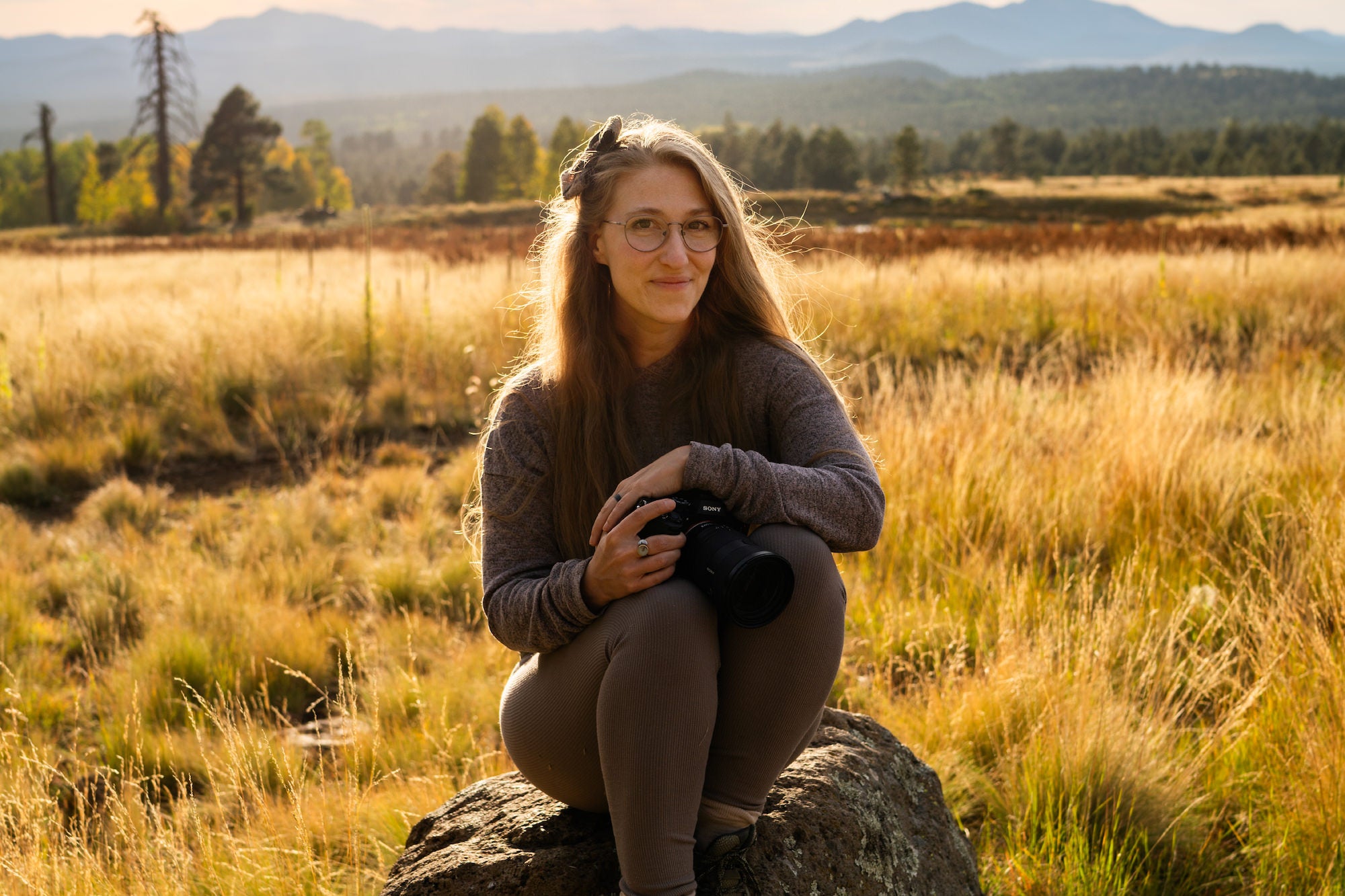
2. Use a remote, self-timer or intervalometer.
A remote is my go-to tool because I can click when I’m in position and ready. The remote will trigger autofocus, so you can be as specific as you like when you set your focus area. I used to seriously struggle with getting my self-portraits in focus. I would manually focus on something in the frame then go stand in place and hope I was in the focus range. Now, I never worry about focus. I just stand where I want and click my remote, knowing the focus will find me.
The self-timer is a fine option if you aren’t taking a ton of shots. You can set it in camera to 2, 5, or 10 seconds. In this example, you’ll want to manually focus your camera because you have to be at your camera to click your shutter and trigger the self-timer. That means you can’t be in position in front of the camera to allow autofocus to find you, and the camera will focus on whatever is in front of the lens.
Many newer cameras have a built-in intervalometer, which allows the camera to take a picture every X amount of seconds for as long as you want. For example, you can set it to take one picture every second for 30 seconds. That means you can play in front of the camera for those 30 seconds, trusting the camera is capturing you as you move and pose.
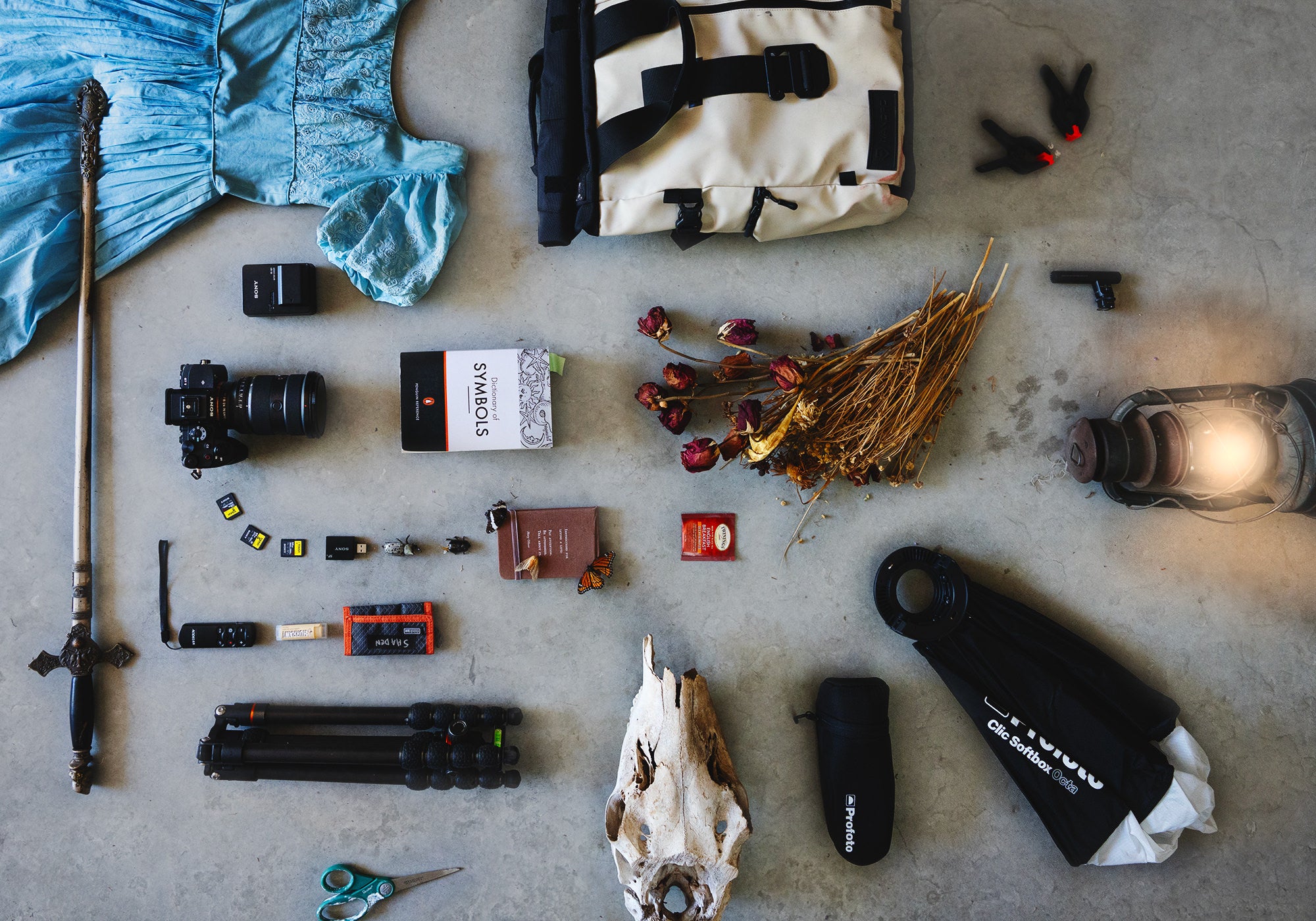
Brooke Shaden's kit for self-portraits. Read more in What’s In My Bag: Brooke Shaden's Single Camera & Lens Kit For Streamlined Self-Portraits.
3. Practice a ton of poses.
As you begin your self-portrait journey, you’ll quickly discover two things: 1) Posing is a lot harder than it looks, and 2) There are certain poses in which you’ll prefer your body.
Try different lenses and angles. Lens choice can make a big difference about how you feel about your body (think wide angle vs compressed zoom), and angle of your lens makes a big difference as well. When you take a selfie with your phone, at what angle do you usually hold it? The same principle applies to self-portraiture. That doesn’t mean only do what you’re used to - you may surprise yourself with different angles!
Learn how to pose your body in a way that feels right. For example, I’m most comfortable posing in one of two ways. Either, 1) Stretched out and lengthened, often shot from a low angle, to make myself look taller (I’m only 5’2”!), or 2) Curled up tight and small. I like to compact into myself and photograph myself like that.
If you’re feeling uncomfortable close to the camera, try backing it up! Take photos from really far away. Put yourself in big scenes where your body is small in comparison to the landscape. Don’t make it about you at first.
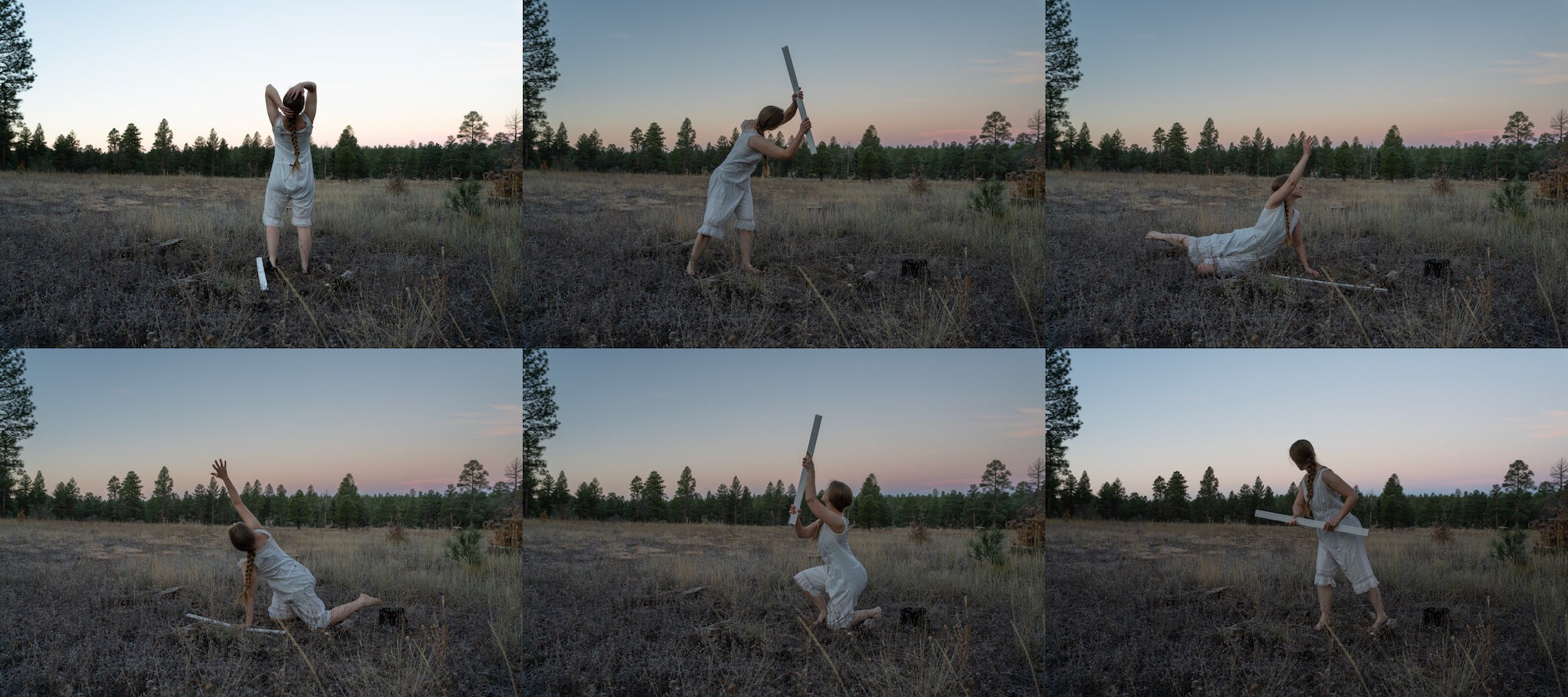
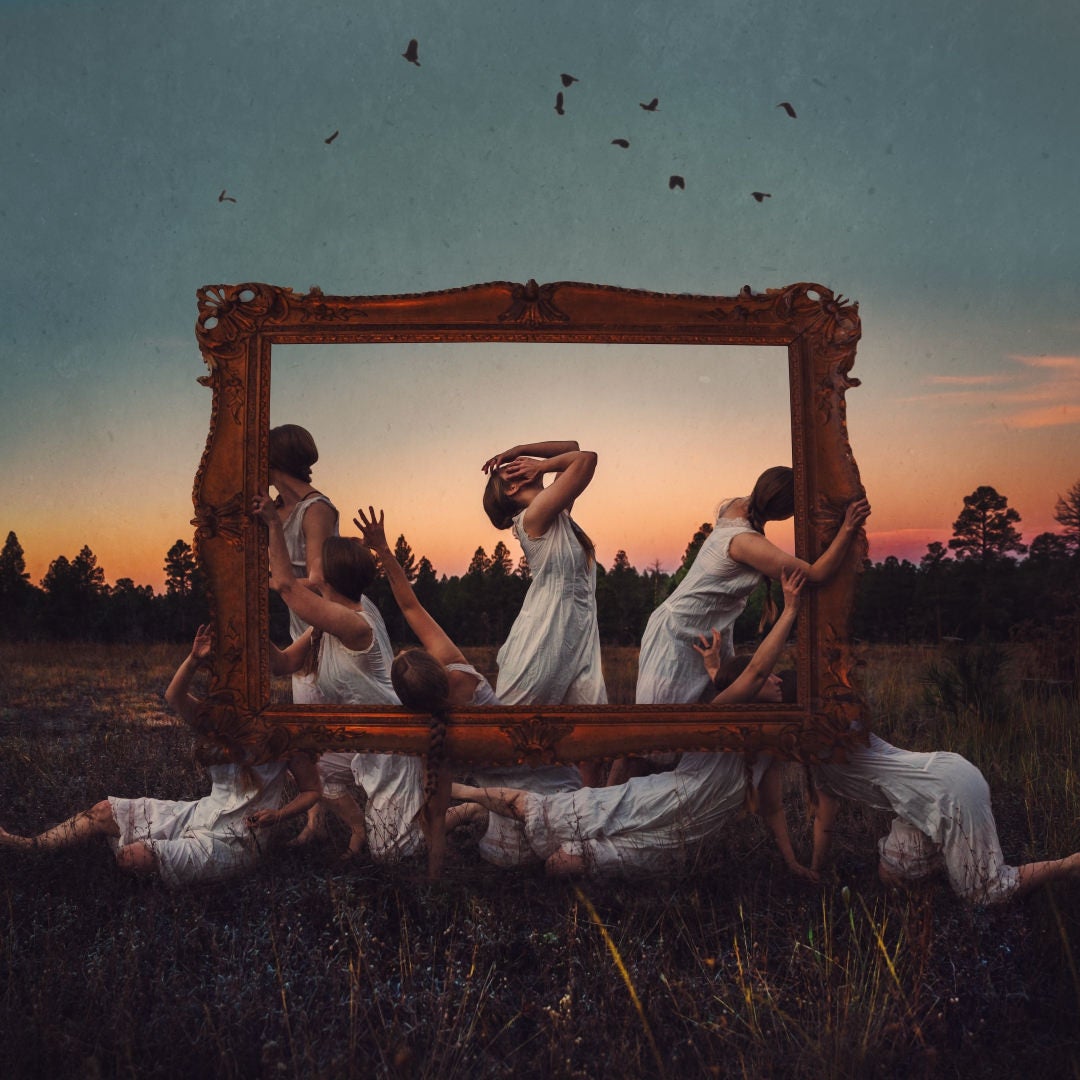
“Art as Commodity” self-portrait by Brooke Shaden, 2024
4. Consider anonymity.
Your face doesn’t have to be a part of your work! Maybe try just photographing certain body parts, like your hand, to start. I almost never show my face in my work because I believe anonymous art is more interesting for the viewer, but also because I simply don’t like showing my face. That doesn't mean I hate my face, but I don’t enjoy emoting that way and prefer to put that emotion into my body language.
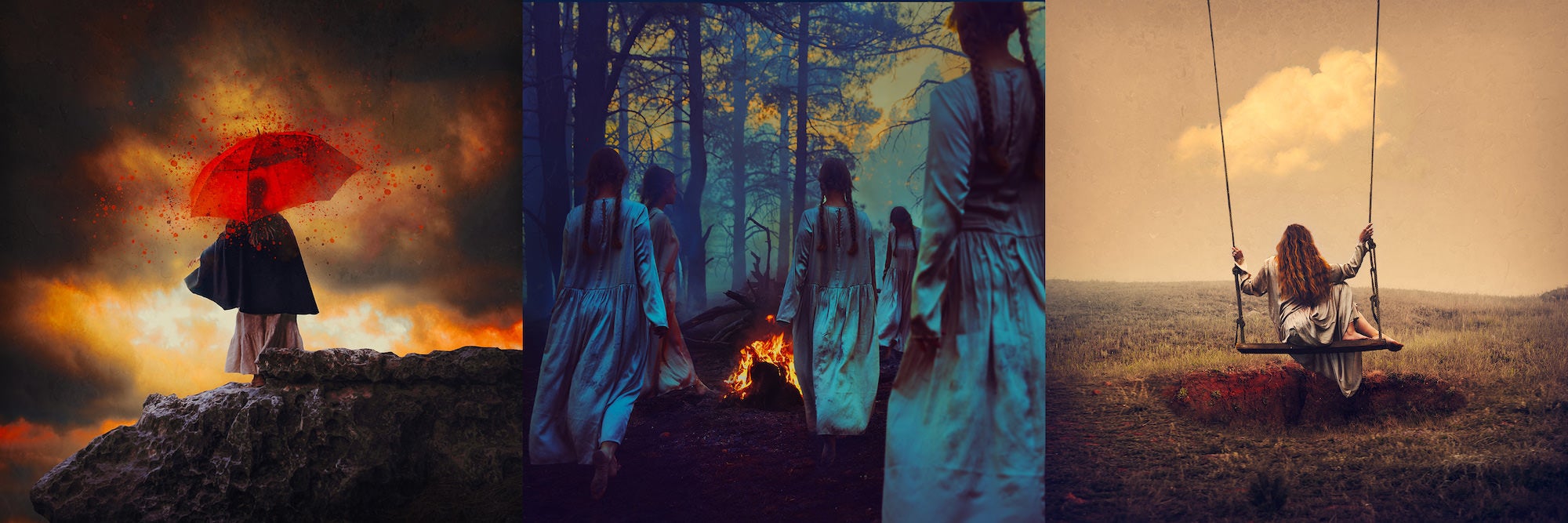
Self-portraits by Brooke Shaden, 2024
5. Find out what you want to say by using yourself as the subject.
Sometimes self-portraits aren’t about you at all—you become a character and you lose your own identity in the image. Other times, the image is inspired by something very personal. Why should you be the one to feature in this image? Considering the impact of the finished product is important in how you approach the image and the conviction in which you go for it.
My very first images were self-portraits. Born out of social anxiety, I desperately wanted to get into photography but couldn’t bring myself to ask others to pose.
The unexpected gift of self-portraiture was that I learned very quickly. I published over one hundred self-portraits in my first year of photography. If I had been hiring models, I never could have produced so much. Instead, I woke up every morning before the sun, created an image, and edited later that day. I could work entirely on my own time without worrying about pleasing anyone but myself.
See more of Brooke Shaden's work on her Alpha Universe Profile and on Instagram @brookeshaden.
Explore more about self-portrait techniques on AlphaUniverse.com and share your Sony self-portraits using #SonyAlpha.



